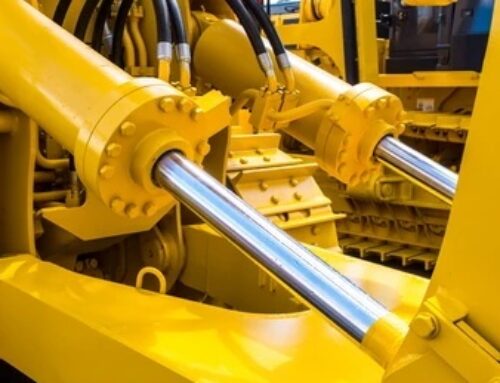The main parameters of the hydraulic cylinders include pressure, flow, size, piston stroke, movement speed, push-pull force, efficiency and hydraulic cylinder power.
- Pressure: Pressure is the pressure of oil acting on a unit area. The calculation formula is p=F/A, that is, the load acting on the piston is divided by the effective working area ofthe piston. It can be seen from the above formula that the establishment of the pressure value is generated by the existence of the load. On the effective working area of the same piston, the greater the load, the greater the pressure required to overcome the load. In other words, if the effective working area of the piston is constant, the greater the oilpressure, the greater the force generated by the piston. Usually, the rated pressure is the pressure at which the hydraulic cylinder can work for a long time. According to the rated pressure, the hydraulic cylinder pressure classification is shown in the following table: unit MPa.The maximum allowable pressure refers to the ultimate pressure that the hydraulic cylinder can withstand in an instant; and the pressure test pressure refers to the test pressure that needs to be endured when checking the quality of the hydraulic cylinder. Most of the two pressures in various countries stipulate that it is less than or equal to 1.5 times the rated pressure.
- Flow: Flow is the volume of oil passing through the effective cross-sectional area of the hydraulic cylinders barrel per unit time. The calculation formula Q=V/t=vA, where Vrepresents the oil volume consumed in one stroke of the hydraulic cylinder piston, t represents the time required for one stroke of the hydraulic cylinder piston, v represents the movement speed of the piston rod, and A represents the effective work of the piston area.
- Piston stroke: The piston stroke refers to the distance traveled between the two poles when the piston reciprocates. Generally, after the stability requirements of the cylinder are met, a standard stroke similar to the actual working stroke is selected.
- The movement speed of the piston: the movement speed is the distance that the pressure oil pushes the piston to move in unit time, which can be expressed as v=Q/A.
- Dimensions: The dimensions mainly include the inner and outer diameter of the cylinder, the diameter of the piston, the diameter of the piston rod and the size of the cylinder head, etc. These dimensions are calculated according to the use environment of the hydraulic cylinder, the installation form, the required push-pull force and stroke, etc. , designed and checked.
Common problems and maintenance of hydraulic cylinders
As a component and a working device, hydraulic cylinders, like all mechanical equipment, will inevitably experience varying degrees of wear, fatigue, corrosion, loosening, aging and even damage in their structural components during long-term operation. The phenomenon makes the working performance and technical condition of the hydraulic cylinder deteriorate, and then directly causes the failure or even failure of the entire hydraulic equipment. Therefore, it is very important to eliminate and repair common problems in the daily work of hydraulic cylinders.
The development trend of hydraulic cylinder
With the in-depth popularization of hydraulic technology and the increasing expansion of application fields and occasions, new requirements are constantly put forward for the working performance, structure, application range, manufacturing accuracy, appearance, materials and test methods of hydraulic cylinders. development and progress.








Leave A Comment